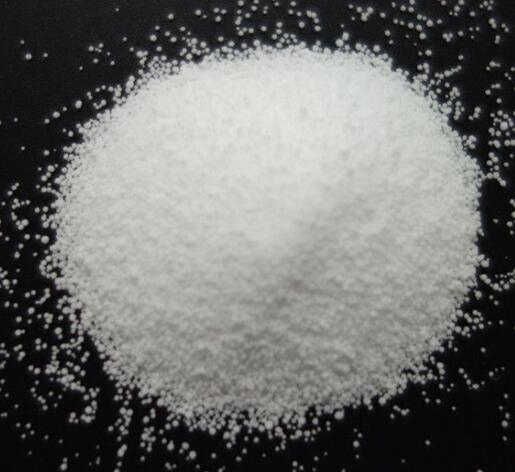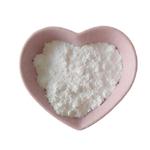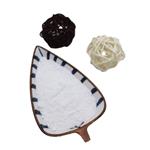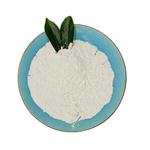Precautions in Handling of Potassium carbonate
Nov 12,2021
Potassium carbonate is the inorganic compound with the formula K2CO3. It is a white salt, which is soluble in water. It is deliquescent, often appearing as a damp or wet solid. Potassium carbonate is mainly used in the production of soap and glass.

Properties
Potassium Carbonate is a water insoluble Potassium source that can easily be converted to other Potassium compounds, such as the oxide by heating (calcination). Carbonate compounds also give off carbon dioxide when treated with dilute acids. Potassium Carbonate is generally immediately available in most volumes. High purity, submicron and nanopowder forms may be considered.
Main uses
Production of glass (Braun tubes, optical glass), soap, lye water, photography, potassium salt, etc.
Precautions in Handling
Potassium carbonate are recognized as OSHA hazardous substances. This chemical material is alkaline and may cause severe irritation by all routes of exposure. Before starting to work with PotCarb, the user should be aware of its properties, understand what safety precautions to follow, and know how to act in case of contact. Some general guidelines are listed below.
Routes of exposure
PotCarb can be irritating to the skin and to a severe degree if in contact with the eyes. Tissue destruction may follow if not properly treated. Inhalation of airborne concentrations of dust, mist or spray may cause damage to the upper respiratory tract and even to the lung tissue which could result in chemical pneumonia, depending upon the severity of exposure. Ingestion may cause irritation to the mucous membranes of the mouth, throat, esophagus and stomach, with severity dependant on the quantity involved. There are no known chronic effects associated with potassium carbonate. However, acute consequences may occur, depending on the length of exposure and whether proper treatment is rendered in a timely fashion.
First-aid measures
Immediately administer the first aid measure described below, then seek professional medical attention.
Eyes - Flush eyes with large amounts of water for at least 15 minutes, holding lids apart to ensure flushing of the entire surface. Washing eyes within several seconds is essential to achieve maximum effectiveness.
Skin - Wash contaminated areas with plenty of water. Remove contaminated clothing and footwear. Do not remove goggles if the eyes are not affected. Wash clothing before reuse. Discard footwear which is contaminated on the inner surface.
Inhalation - Remove to fresh air. If breathing is difficult have a trained person administer oxygen. If respiration stops give mouth-to-mouth resuscitation.
Digestion - Never give anything by mouth to an unconscious person. If swallowed, do not induce vomiting. Give large quantities of water or several glasses of milk if available. If vomiting occurs spontaneously, keep airway clear.
- Related articles
- Related Qustion
- Potassium carbonate: a food additive Apr 15, 2024
One of the uses of potassium carbonate is an additive in producing some foods. Additives are essential compounds for the production of various foods.
- Potassium carbonate: Preparation, application, quantitative method and toxicity Apr 3, 2023
Potassium carbonate is the primary component of potash and the more refined pearl ash or salts of tartar. It is prepared commercially by the reaction potassium hydroxide with carbon dioxide.
- Handling of Liquid Potassium Carbonate Nov 15, 2021
Liquid 47% potassium carbonate is typically shipped in drums, tank truck or rail car. It is also available by consignment as a barge load, shipped from the Armand Products’ plant in Muscle Shoals, AL. Each form of transportation has its own
Potassium carbonate is the inorganic compound with the formula K2CO3. It is a white salt, which is soluble in water. It is deliquescent, often appearing as a damp or wet solid. Potassium carbonate is mainly used in the production of soap an....
Nov 12,2021Inorganic chemistryDopamine hydrochloride, a sympathomimetic amine vasopressor, is the naturally occurring immediate precursor of norepinephrine. Dopamine hydrochloride is a white to off-white crystalline powder, which may have a slight odor of hydrochloric a....
Nov 15,2021APIPotassium carbonate
584-08-7You may like
Potassium carbonate manufacturers
- Potassium carbonate
-

- $1340.00 / 10tons
- 2024-04-16
- CAS:584-08-7
- Min. Order: 10tons
- Purity: 99%
- Supply Ability: 100tons
- Potassium carbonate
-

- $28.00/ kg
- 2024-03-11
- CAS:584-08-7
- Min. Order: 500kg
- Purity: 99.9
- Supply Ability: 200tons
- Potassium carbonate
-

- $0.00 / 1kg
- 2024-02-29
- CAS:584-08-7
- Min. Order: 1kg
- Purity: 99%
- Supply Ability: 50000




